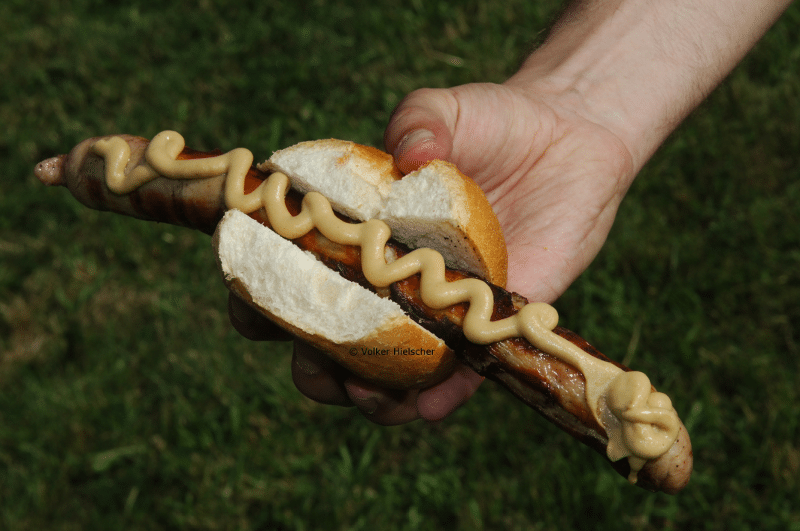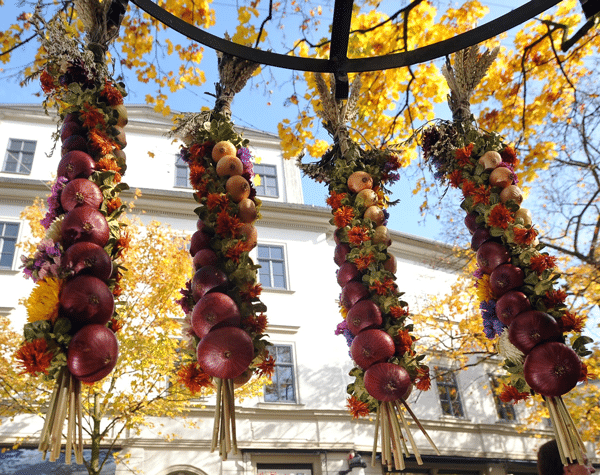
Germany brings to mind many things including beer, bratwurst and a rich cultural history. One of the great things about Germany – besides the beer and bratwurst – is the country’s preservation of customs and traditions which includes its “Volksfeste” (peoples’ festivals). Located in the center of Germany, the federal state of Thuringia is no exception. In this hidden gem of Germany, town fairs and festivals celebrate everything from spring to music to bratwurst and onions. Here are just a few of the many celebrations held throughout Thuringia.
Celebrating Spring
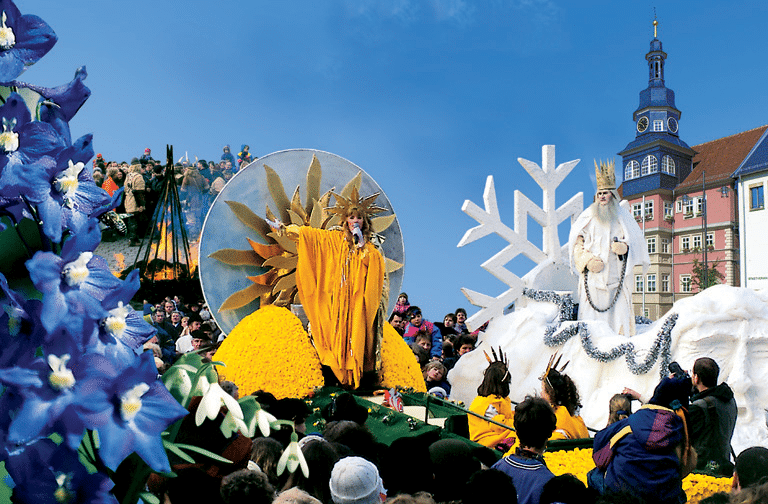
Anyone who lives where winter brings cold and snowy weather is happy to see the first signs of spring. But in the Thuringian town of Eisenach, the arrival of spring is taken to a whole other level at Sommergewinn Eisenach – Germany’s biggest traditional spring festival (Frühlingsfest).
Each year the sun goddess, Frau Sunna, and Herr Winter have an argument about whose turn it is to rule. Winter will lose but not without a fight. A straw doll representing winter is burned as a ceremonial parade comprised of over 120 horse and carriage floats, bands, and performers moves through the decorated town to the Markplatz to usher in the season.
Sommergewinn begins the weekend before Sunday Laetare, the fourth Sunday of the season of Lent, but it was around in pre-Christian times when chasing away winter and welcoming summer was celebrated at the pagan New Year.
Celebrating the Sausage
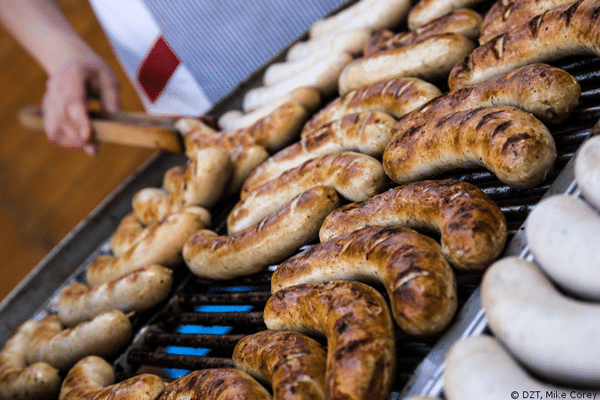
Photo Courtesy of Thuringia Tourist Board
The existence of the Thüringer Bratwurst can be traced back to 1404 with recipes for varieties of the sausage dating back to the 1600s. When a sausage is that much a part of history, it deserves to be celebrated – and it is each year at Thüringer Bratwurstfest in Erfurt.
Kicking off the summer season each March, torchbearers bring the “Bratwurst fire” from the first German Bratwurst Museum in Holzhausen zum Domplatz. Sausage royalty is on hand with the crowning of a King and Queen Sausage. And Erfurt’s cathedral square is transformed into what is likely Germany’s largest barbecue.
If you miss the summer season bratwurst kick-off, no worries, there is a fried Bratwurst Festival in October in the 1st German Bratwurst Museum in Holzhausen.
Celebrating the Music of the World
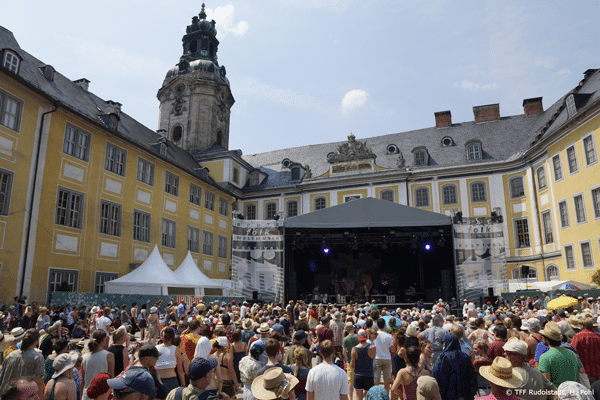
The quiet country town of Rudolstadt comes alive the first weekend of July with the arrival of the Rudolstadt Festival (former “Tanz-und Folkfest”). Music lovers flock to Rudolstadt for over 200 concerts of world music. “Folk Roots – World Music” is the motto of the festival, which showcases styles such as cumbia and mbalax, bangra and klezmer, Irish fiddling, Sardinian and Mongolian overtone singing, and more. The event encompasses the entire town with concerts held on 32 stages from the baroque church to the town theatre, to the castle terrace, and the marketplace. Visitors and musicians from more than 30 countries take part and music is everywhere.
Bach-Country Thuringia
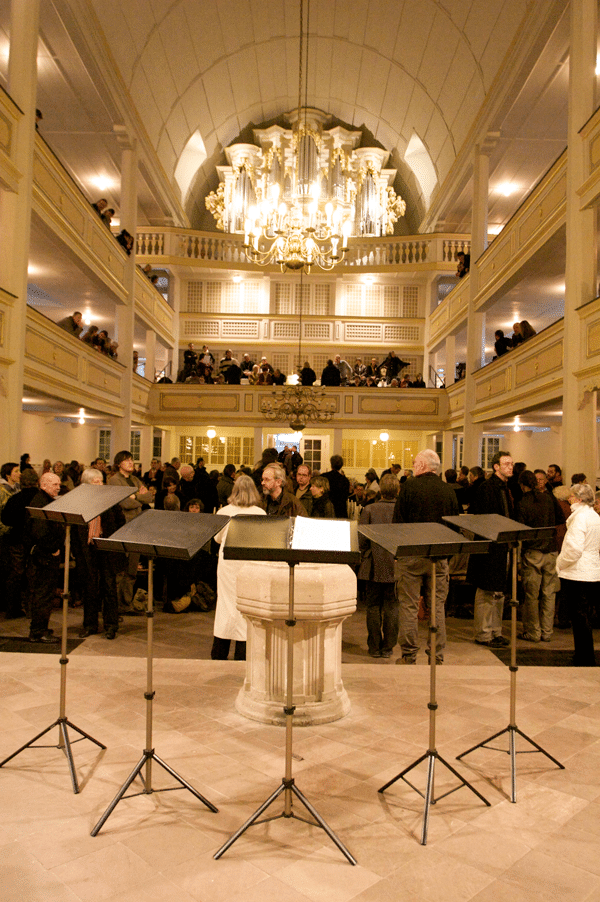
The Thuringia Bach Festival (Thueringer Bachwochen) is the largest festival of classical music in the Free State of Thuringia. Specializing in Baroque music and performing the works of Johann Sebastian Bach in authentic sites, the festival appeals to music lovers and tourists wishing to discover the traces of the great composer in Thuringia.
The state of Thuringia forms an ideal backdrop to the festival because of the unique role it played in the life of Johann Sebastian Bach. Thuringia is home to a wealth of authentic Bach sites, including the Bachhaus and Bach’s baptismal church in Eisenach, the church in Dornheim where he was married, Mühlhausen, Arnstadt and Weimar where he composed much of his early work, as well as his ancestral houses in Erfurt and Wechmar. These impressive settings provide a stage and a historical context for a series of ambitious concerts, which make up the program of this festival.
[alert type=blue]
www.thueringer-bachwochen.de/en/
[/alert]
Celebrating History
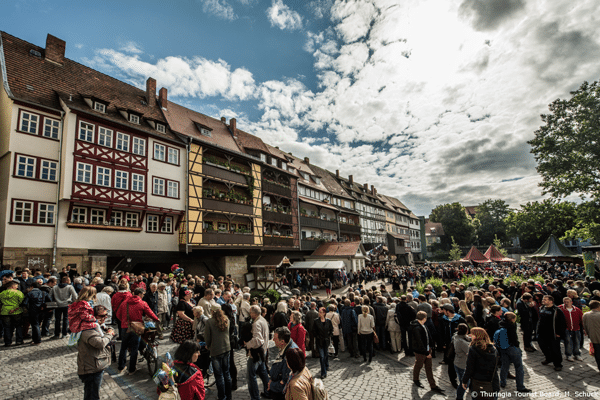
Every year on the third weekend in June, the medieval state capital of Erfurt brings the Middle Ages back to life in the form of the Merchants’ Bridge Festival – Krämerbrückenfest. Set against the backdrop of the Merchant’s Bridge – the longest inhabited bridge north of the Alps and one of Erfurt’s must-see landmarks – you’ll experience more than 1,260 years of history. A highlight of the festival is local craftsmen demonstrating the skills of the past at medieval craftsmen booths (Mittelaltermarkt). Jesters are on hand with plenty of fun and games. Minstrels sing and sword fighters do battle.
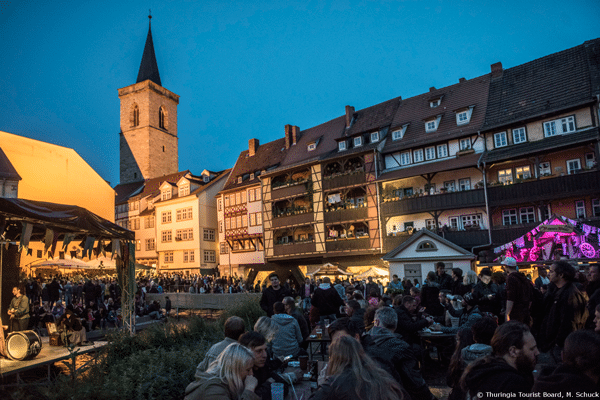
Erfurt is also the site of the Erfurt Music Festival each June. Music lovers of all types come together to attend free concerts of different styles and genres scattered throughout the town in theaters and on numerous stages. New Orleans jazz takes center stage in various styles throughout the festival. From atmospheric blues to the rousing rhythm of brass jazz bands, there’s something for every music lover to experience.
The largest Thuringia town festival and one of the most popular is Alstadtfest. Usually held in the summer over a long June weekend, the Alstadfest is ideal for the entire family. Great music, dance groups and all types of food and sweets are on hand to keep everyone entertained.
Celebrating the Onion
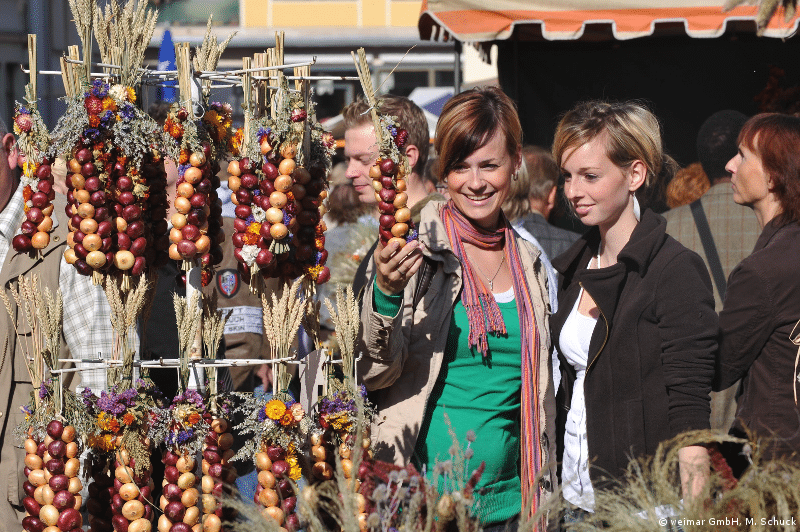
Each October in Weimar the onion takes center stage as the star of the show at Zwiebelmarkt, the Onion Market. The festival began in 1635 as a “market for onions and beasts” and continues today. Attracting upwards of 350,000 visitors over three days, the Onion Market is the largest festival in Thuringia.
The flavor of onions is everywhere in onion cakes, soups, and more. And, the onions get all dressed up for the festival as garland braided together and decorated with dried flowers of yellow, white or lilac.
Hundreds of stalls sell agricultural products, spices, crafts, pottery, and woodworking items – and all are decorated with the colorful onion garlands. It is said that Johann Wolfgang von Goethe (who lived in Weimar between 1775 and 1786) often attended the festival and loved onions so much so that he used to secure onions plaited in the form of a heart to his writing desk.
[alert type=blue]
For a complete list of festivals and town fairs in Thuringia visit:
www.visit-thuringia.com/travel-hotel-holiday-tour/town-fairs-128151.html
www.visit-thuringia.com/travel-hotel-holiday-tour/festivals-128152.html
[/alert]

